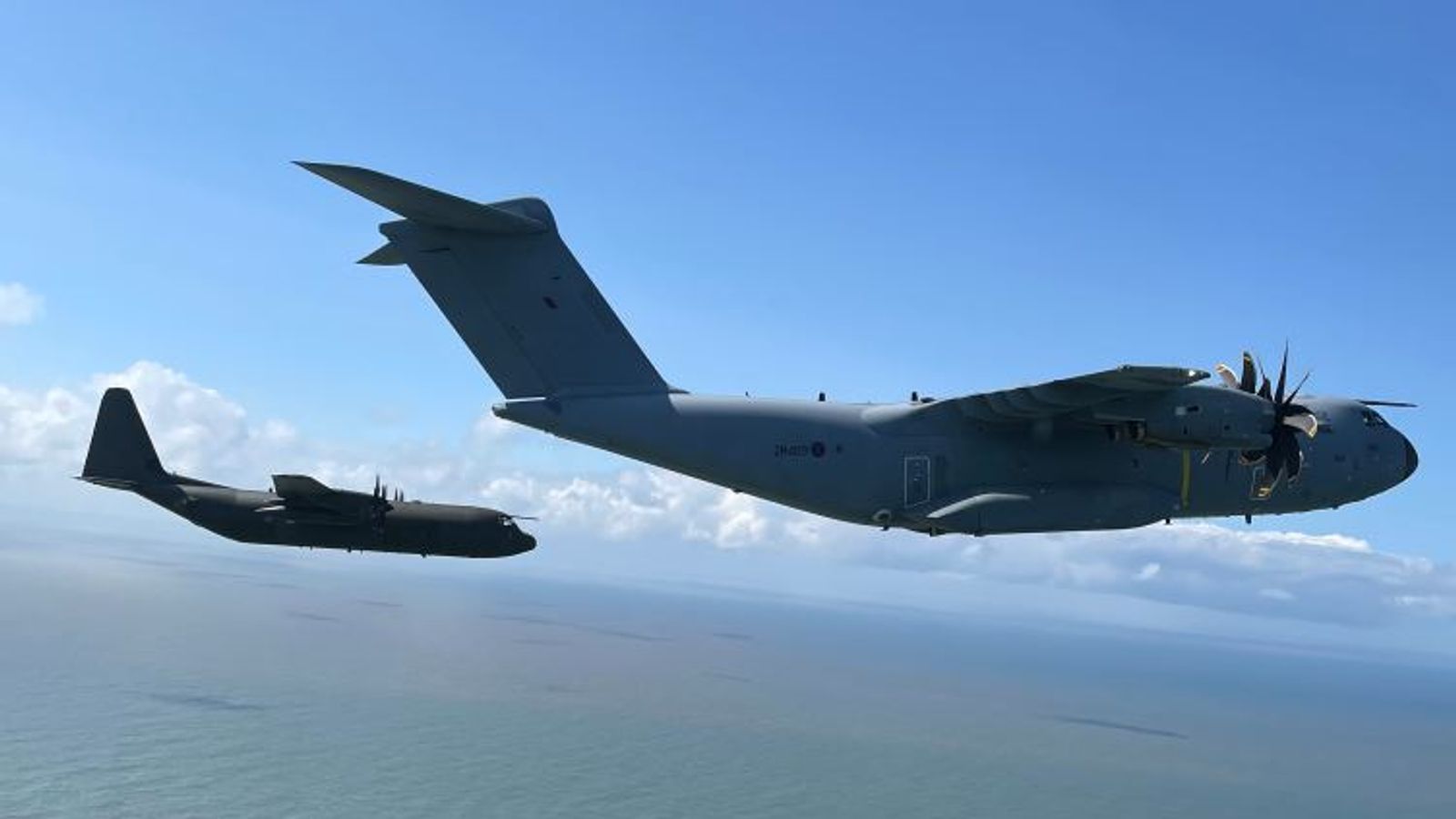The aircraft in the Royal Air Force fleet are impressive, but witnessing the skill and professionalism of their pilots and crew in person was awe-inspiring.
After clearing security at the passenger terminal at RAF Brize Norton, we were led to our aircraft for the journey ahead.
Two C-130J Hercules lay waiting on the tarmac – they are arguably the most familiar of all RAF aircraft.
But they do take your breath away nonetheless, especially when the propellers are turned on.
The Hercules planes were brought into service in the UK in 1999, but this is likely to be one of their final journeys before they are retired.
We boarded one of them at around 11am – both were about to work in tandem for a special one-off coronation flypast rehearsal.
The pilots allowed us to spend almost three hours with them in the cockpit plugged into their communications, with corresponding aircraft also taking part in the practice event.
King Charles’s coronation: Little-known facts about the royal crowning ceremony
Government taking coronation security threats ‘very seriously’ after reports rape alarms will be thrown at horses
Anti-monarchy group to stage protest along Charles’ coronation route
Once we’d taken off, one of the crew made us a cup of tea on board as we cruised at 1,000ft.
We flew out off the coast of Norfolk at first, with the second Hercules cruising a few feet alongside us. This was the first moment of utter surrealism.
It can’t be overstated how rare it is to see aircraft flying this close together and this low. I could see the eyes of the other pilots. They flew like this, swapping sides occasionally for fun, for about an hour.
Once at sea, we were joined by an A400M aircraft which, for lack of technical speak, was enormous. This is their new toy, entering operational service with the RAF in 2014.
We began to enter a tiered formation when it arrived as pilots across the three aircraft used their experience, negotiation and eyesight to fly seamlessly alongside each other, which felt like almost a whisker away.
We glided as a team at a much lower altitude of around 500ft to practice the distance they will fly at on 6 May.
Then more aircraft began to join the communications network and we suddenly were able to hear different voices of yet more pilots through our headphones.
We headed for RAF Cranwell, the location for the practice flypast. A building on the site was being used as a faux Buckingham Palace for the day for the aircraft to aim for.
As we approached, aircraft began joining ahead and behind us, forming – what we could see ahead – was an impressive display of military precision.
We cruised at 500ft over RAF Cranwell, the headwind making it bumpy for us in the back but for the pilots there was unwavering focus and concentration.
Be the first to get Breaking News
Install the Sky News app for free
This is what they are used to doing but squadron leader and commanding officer, Jim Rodon, says that even with 17 years of flying experience, and having led the flypast for the late Queen’s Platinum Jubilee, there is still some pressure attached to the gig.
“I suppose there is a unique pressure,” he tells me.
“We want to provide a fitting tribute to His Majesty; we are all very proud of the monarchy.
“We are used to pressure, yes, but maybe slightly different pressure on operations, but I’d like to think we have been conditioned to deliver and we’re excited to do so.”
The rehearsal was the first and the last involving most of 60 aircraft due to be involved on the day in a flypast over The Mall.
The aircraft that will take part include 16 helicopters, the historic Spitfires of the Battle of Britain Memorial Flight, and the F-35B Lightning jets.
If the view from the ground is anything like the view from the skies, it’ll be a feast for the eyes.










